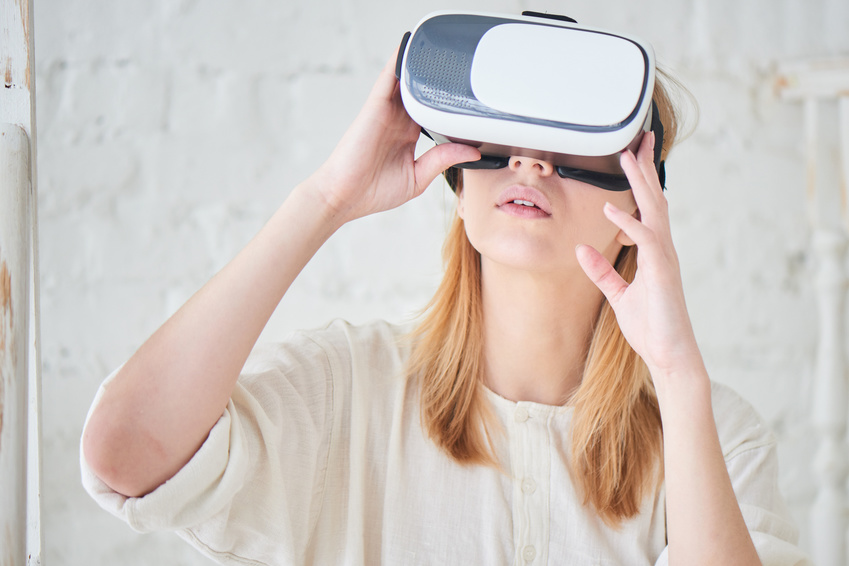
soon a mass market consumer good?
Virtual reality
soon a mass market consumer good?
Virtual reality
Hardware and software vendors have been flooding the market with virtual reality technology for months. Enthusiasts have started playing with it and exploring its potential. Will 2016 be the year of the breakthrough of virtual reality? And what is the difference between it and augmented reality? A brief market overview.
The target market of virtual reality is currently focused mainly on gaming, 3D movies and some experimental projects. Entry-level consumer products are available for a few hundred euros.
However, there is an interesting aspect that could provide the virtual reality technology with a great entry into the market: The most recent version of Windows 10 is providing the gaming community with an impression of the new virtual reality world - and the users seem to approve. The free Microsoft upgrade was extremely successful. Windows 10 is currently installed on over 110 million devices. Microsoft has declared its goal to reach the one-billion mark for devices running Windows 10 by 2018. Furthermore, around 200,000 users are registered with the Oculus Developer Centre. Netflix, 20th Century Fox, CNN, Sky and others have already announced that they are producing the content for it.
It is hardly astonishing that the large movie studios are entering into strategic partnerships with virtual reality businesses. They are likely to surprise the market with VR programmes soon. The same is also happening with the large news and sport broadcasters. The stage is set for the big show.

The new virtual reality experience.
MARKET FIGURES AND SURVEY VALUES
Word of the new experience is going round quickly in the gaming market. A survey by Frank N. Magid Associates found that 70% of US consumers have already tried out a virtual reality game and 25% of that figure found it 'very interesting'. One quarter of US consumers' homes are ready for the technology and a further 23% are likely to upgrade soon.
Of all the market players, Oculus Rift is the leader of the pack with a popularity rate of 25%. Next are Samsung VR Gear at 21%, PlayStation at 20% and Google Cardboard at 17%.
Of the consumers who are interested in virtual reality, 66% would like to watch movies and TV programmes, 59% are interested in gaming, 41% in music, 39% in travel and 38% in sport.
"It is clear that many want to try out the technology because it is new", says Mike Vorhaus, the President of Magid Advisors. "It is interesting that the technology seems to be popular not only among gamers but also in other segments of the entertainment industry."
These figures were presented at the CES in Las Vegas in January. Since then the technology has rapidly been becoming a consumer product. The big names, like Oculus Rift, PlayStation VR and HTC Vive have invested a lot into their marketing. Google, whose Cardboard glasses constituted their first foray into the new technology, sees potential and has already formed a separate business unit for it. The industry estimates that the market will turn over USD 30 million in 2020.
Expectations of virtual reality technology are increasing and consumers are hoping for new impressive visual experiences. After 3D and 4K, electronics vendors see the next big market in this area - on the other hand, there is a need for suitable content to be produced.
AUGMENTED REALITY VERSUS VIRTUAL REALITY
Virtual reality and augmented reality glasses offer 3D imagery in HD resolution. The difference is that augmented reality glasses have transparent lenses. The user can see through them. Virtual reality glasses are completely dark.

Augmented reality glasses place viewers into a virtual environment,

while virtual reality places them into a virtual world.
This small difference can have a big impact, however, and could put augmented reality into the lead. All the big businesses are already present in this area for it is here that the smartphone and tablet markets are of interest. They have big plans: Apple, Google, Microsoft, Facebook.
Virtual reality is fantastic for gaming and 3D movies – they are a perfect fit. Virtual reality forms an artificial environment to be enjoyed while standing, or preferably, sitting. One should never walk around on the street with these closed glasses. Apart from the entertainment industry, there are some other niches to which virtual reality appeals, e.g. medicine, military and education, i.e. training. In these areas there is also already an ecosystem of companies.
Augmented reality is cool for games but perhaps not quite as cool as virtual reality. But the exciting advantage could be that augmented reality projects the games into your ordinary environment and you can interact with others on the street. You can take augmented reality anywhere and still pursue your daily activities.
Virtual reality is therefore like a game console you wear in front of your face, while with augmented reality you have your smartphone in front of your eyes at all times.
Finally, it could be said that virtual reality will change the way we handle information, just like radio, TV and computers did in the past. They will be integrated into people's daily environments. Let's hope that we will still know the difference between what's real and not real in the future and that we will be able to influence our actions with a healthy dose of common sense.

